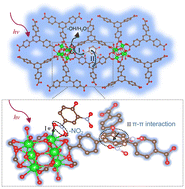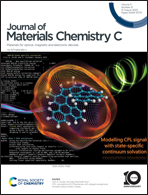Molecular insights into the sensitivity detection mechanism of fluorescent 2D Zr-BTB for 2,4-dinitrophenol†
Abstract
Detection of nitroaromatic compounds (NACs) has been investigated previously using fluorescent metal–organic frameworks (MOFs). However, the vagueness of the sensing mechanism has hindered the development of efficient sensors. Here we have explored a two-dimensional (2D) MOF, Zr-BTB nanosheets, as a rapid (as short as 10 s), sensitive, and selective sensor for detecting low-concentrations of 2,4-dinitrophenol (2,4-DNP); its limit of detection for 2,4-DNP was quantified to be as low as 0.013 μM (2.40 ppb). The molecular sensing mechanism and the specific interaction sites were investigated using FTIR, UV-vis absorption, XPS, and 2D ssNMR spectroscopy along with density functional theory (DFT) calculations. This work presents insight into florescence-quenching mechanisms for the sensitive sensing of NACs at the molecular level, which may provide valuable ideas for designing novel MOF sensors for NAC detection.

- This article is part of the themed collection: #MyFirstJMCC


 Please wait while we load your content...
Please wait while we load your content...